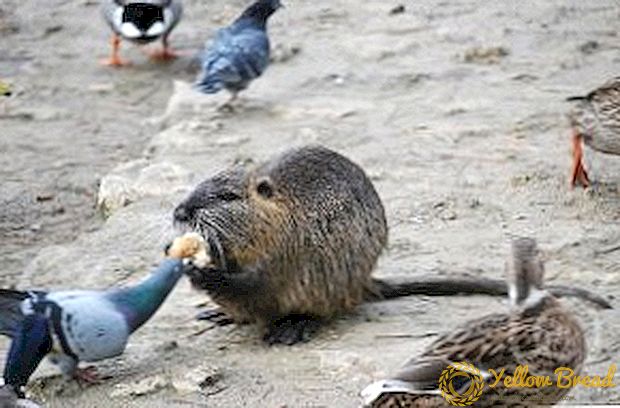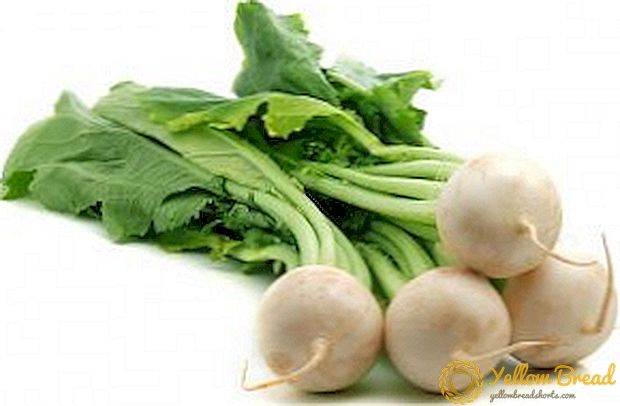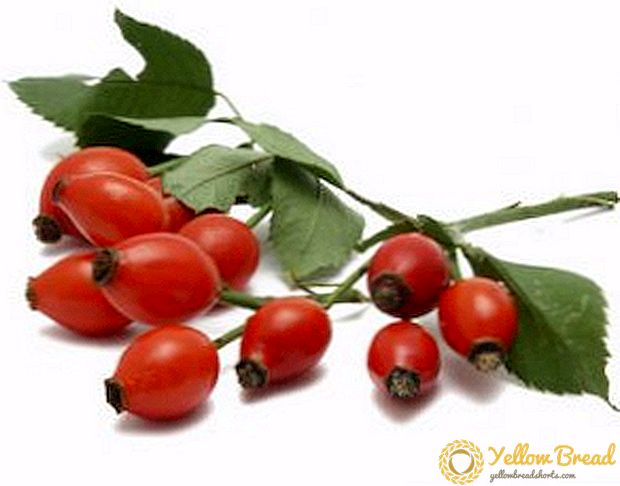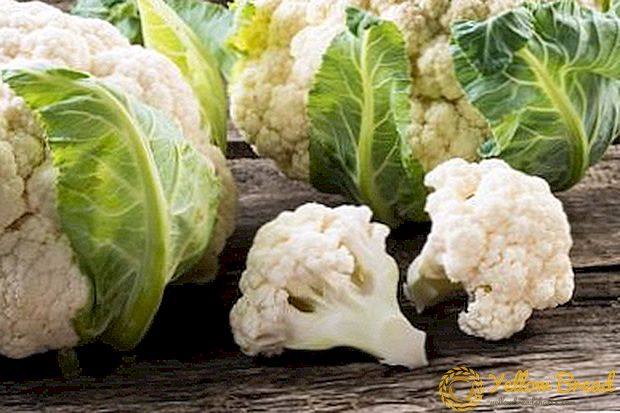 Nutrition is currently a successful business and a dynamically developing branch of agriculture. Animals are raised for dietary meat and excellent fur. These are prolific and beautiful animals that are distinguished by good health. But they also get sick if the elementary sanitary and hygienic rules for their maintenance are not followed.
Nutrition is currently a successful business and a dynamically developing branch of agriculture. Animals are raised for dietary meat and excellent fur. These are prolific and beautiful animals that are distinguished by good health. But they also get sick if the elementary sanitary and hygienic rules for their maintenance are not followed.
Nutrition is a relatively new branch of economy, so experts have a certain lack of information about how and why nutria is sick, how to treat them and how to prevent diseases. Therefore, in this article we will consider in detail the methods of prevention and treatment of major diseases that affect nutria.
Nutria extremely rarely get sick. These animals have a stable immunity, in comparison with many furry animals, which are bred in our country for dietary meat and luxurious fur. Therefore, nutrition is a profitable business.
Nutrition is a relatively new branch of agriculture, so the majority of animal farmers lack knowledge and practical skills that would help prevent diseases, quickly diagnose them and successfully treat them. In this article we will examine in detail all these questions.
- Contagious infectious diseases
- Paratyphoid fever (salmonellosis)
- Streptococcus
- Pasteurellosis
- Colibacteriosis
- Non-contagious diseases
Contagious infectious diseases
Paratyphoid fever (salmonellosis)
It is very difficult to diagnose this disease (sometimes it is determined only by an autopsy). Illness leads to the death of the beast within 24 hours. The incubation period is not less than 10 days and no longer than 14-16 days. The infection gets more often through the alimentary canal, and successfully develops in conditions of high temperature, so the animals get sick mostly in summer.
Symptoms
Infected animals become slow, lethargic, do not eat, their hair looks disheveled, and their weight rapidly decreases. After this, fetid green diarrhea appears. The abdominal cavity of the beast is swollen from accumulated intestinal gases, the spleen is increased 10-15 times, the eyes water and gradually stick together.The body temperature of the animal gradually grows and reaching its peak drops sharply, often below normal. Hunched over the sick animal slowly reluctantly moves through the cage or settles in a remote corner. His fever from the nose is secreted mucous fluid from the blood, the stool becomes liquid and blood. The animal completely refuses to eat and in 90% of cases dies within 24 or 48 hours.
The reasons
The affliction is caused by the pathogenic bacteria of the Gertner class, Breslau. In most cases, the animal becomes infected through poor-quality drinking and food, as well as from infected animal carriers. Salmonella is carried by insects (flies, mosquitoes, cockroaches), mice, rats, people and birds.
Effects
As a rule, death occurs within one or two days after infection.
Treatment
Animals are treated with furazolidone, it is added to the feed at the rate of 30 mg per 1 kg of the weight of a particular individual. This therapy lasts at least 7 days and no more than 10 days. For treatment, they also use biomitsin or levomycetin, they are given to young animals not more than 15 g and not less than 10 g per day, and adult nutria - about 20-30 g per day every day, either 4 or 5 consecutive days.
Prevention
 First of all, a new animal on a fur farm is kept on quarantine.
First of all, a new animal on a fur farm is kept on quarantine.
If among nutria there were cases of diseases, then antibiotics are added to the entire population in the feed, and the sick animal is killed. For the contact group of nutria establish a 20-day quarantine, they are isolated from the main mass of animals.
Vaccination has a good preventive effect. Animals are vaccinated annually 1-2 ml. polyvalent protivoparatyfnoy vaccine. Immunization is carried out for 5 days making subcutaneous injections of the entire population. The effect lasts 7-8 months, after which the vaccination is repeated.
In general cases, in order to avoid the emergence of individual diseases or the mass loss of animals, it is necessary to observe basic sanitary and hygienic norms and the requirements of their maintenance and feeding: give only fresh food, regularly clean and ventilate the premises, maintaining optimum temperature and humidity in them. Experts recommend pouring concentrated feed with hot steam before feeding.
Streptococcus
This is a rare disease that has been identified relatively recently. It affects nutria of any age, from birth to old age. Most often, babies are ill 2-6 months.The disease is diagnosed only by a veterinarian based on research data in the veterinary laboratory.
Symptoms
The incubation period of the disease lasts at least a day and no more than 36 hours, most often it is sluggish, rarely - acute. Experts do not emit typical signs of illness in newborns. Infected older animals sharply lose interest in food, become lethargic, move little, hiding in the dark corners of the cage. When exacerbation of the disease occurs diarrhea, articular inflammation of the paws (mainly the back), there are bloody or purulent frothy nasal discharge.
The reasons
Pathogenic streptococci are recognized as pathogens. The disease occurs when the conditions of keeping animals are characterized as unsanitary: dirty cages, stuffy, poorly lit room, stale food and drink.
The main source of the disease is feces and mucous discharge from the nose of sick animals. Streptococci can be contained in the birth canal of an infected mother, so the baby is already infected at birth.
Effects
A sick animal quickly loses weight and becomes inactive. Infected females have impaired reproductive ability, they give birth to defective cubs or are aborted.Affected young growth is slowly developing and growing abnormal.
Treatment
Experts state that the treatment with antibiotics sensitive to pathogenic streptococci is highly effective. In such cases, they recommend drugs of the penicillin series, most often used the antibiotic bicillin-5, which is twice injected intramuscularly at 60 thousand units. with a frequency of 5 days. Veterinarians recommend treatment with norsulfazole, it is dosed at the rate of 40 mcg per 1 kg of animal weight, this therapy is carried out strictly according to the recommendations of the doctor.
Prevention
It is important to adhere to all rules and regulations of quarantine in respect of individuals newly arrived in the nursery, as well as to minimize contact between domestic and stray animals. Experts in time and quickly destroy the breeding mouse-like rodent parasites (mouse and rats).
Pasteurellosis
Acute infectious disease, which is caused by pasteurellosis bacteria, most often in spring and summer, and sometimes in the fall. It affects mainly young individuals not older than 6 months.
Symptoms
 The incubation period of the disease does not exceed 3 days, often, in acute form, it is very short (about a day).The duration of the disease is sometimes not more than 12 hours, often sluggish process lasts 2-6 days.
The incubation period of the disease does not exceed 3 days, often, in acute form, it is very short (about a day).The duration of the disease is sometimes not more than 12 hours, often sluggish process lasts 2-6 days.
The acute form of the disease is accompanied by a sharp decrease in appetite, vomiting, drooling and bloody mucous discharge from the nose, and the stool is greatly diluted. Obvious drowsiness, characteristic staggering gait, heavy uneven breathing often with a wheeze. The fur becomes dry, brittle and disheveled. Convulsive muscle contractions of the pelvic area are clearly visible, paralysis of the limbs often occurs. Sometimes serous, suppurative conjunctivitis is observed in infected animals. The animal quickly loses weight and in the literal sense of the word "dies out" before our eyes. Before he dies, he gets a lot of nosebleed.
Only a veterinarian can diagnose the disease, based on the results of laboratory tests of an animal that has not received antibiotics.
The reasons
They are infected by infected food and drink, as well as by contact with sick animals and birds (mice, rats, pigeons). Pathogens enter mainly through the digestive organs.
Effects
Often infected animals asymptomatically die suddenly as in severe poisoning. In 95% of cases, the sick young individual dies, in mature individuals the mortality rate is slightly lower - 80% -90%. An autopsy shows inflammation and hemorrhage of internal organs and mucous membranes, edema or purulent inflammation of the lungs, an enlargement of the spleen by a factor of 2-3, and sometimes damage to the gastrointestinal tract.
Treatment
Antibacterial therapy is carried out only under the guidance of a specialist, most often fighting the ailment with the help of intramuscular injections from 25 to 50 thousand units. 1 kg of animal weight, depending on the type of antibiotic. Injections are given twice or thrice a day until relief comes.
Prevention
 For prophylactic purposes, vaccination with a special emulsified vaccine, which is administered intramuscularly, is recommended.
For prophylactic purposes, vaccination with a special emulsified vaccine, which is administered intramuscularly, is recommended.
If, among the entire stock of nutria, some of the individuals became ill, they were quickly killed, the contact group of animals was isolated and kept under quarantine. The room where the animals were kept is disinfected.
In general cases, in order to prevent the occurrence or spread of the disease, all sanitary and hygienic norms and rules for caring for nutria are strictly followed.Do not allow crowding of animals, as well as sharp fluctuations in temperature and humidity inside the pen.
Colibacteriosis
This disease affects mainly the young of the young, not older than 5 months of age and not less than 3 months from birth. The disease is diagnosed solely by a veterinarian on the basis of pathological findings and the results of bacteriological laboratory tests. At the same time they rely on the general clinical picture of the development of the disease, compiled from the words of eyewitnesses (animal breeder or doctor).
Symptoms
The incubation period in the acute form of the disease is sometimes no longer than a day, with a sluggish form it can stretch up to 5 days. Patients become lethargic, slow-moving, apathetic, they eat little. Liquid stools with a characteristic unpleasant odor appear, the animal quickly loses weight. Rapid progressive exhaustion leads to the death of the animal.
The reasons
The main causative agent of the disease is E. coli, which, under favorable conditions, becomes pathogenic. Infection occurs through the gastrointestinal tract. The main carriers of the disease are considered: dirty food, stale water, unclean cells, mouse-like rodents and other infected animals.
Effects
The animal progressively loses activity, and then vitality. At first, it moves more slowly than usual, eats less, gradually gradually refuses to eat and is mostly stationary. Mortality in colibacillosis is 90%.
Treatment
Recommended complex therapy, combining antibiotics, vitamins and special polyvalent antitoxic serum. Of these, according to the prescriptions of the doctor, medical mixtures are prepared which are injected under the skin: 0.5 ml - to newborns no older than 5 days old, young animals - 1 ml, to adults - more than 1 ml, depending on the weight of the animal.
Prevention
 In order to prevent single and massive diseases of the entire livestock, animal farmers are obliged to comply with basic sanitary and hygienic norms and requirements for breeding nutria. Clean and air the rooms in a timely manner, optimize the temperature regime of the pens, monitor the humidity, provide regular and good nutrition (food is treated with hot steam and enriched with vitamins).
In order to prevent single and massive diseases of the entire livestock, animal farmers are obliged to comply with basic sanitary and hygienic norms and requirements for breeding nutria. Clean and air the rooms in a timely manner, optimize the temperature regime of the pens, monitor the humidity, provide regular and good nutrition (food is treated with hot steam and enriched with vitamins).
New animals must be kept in quarantine.
After identifying a sick animal, it is isolated and killed, and the contact group of individuals is separated from the entire population and kept for 15 days under strict quarantine.A field of this disinfect the cells and the whole room.
Tuberculosis
It is a chronic affliction that is most common in nutria in the lung or intestinal form. All other forms of the disease are extremely rare.
The disease is diagnosed by the method of tuberculation: tuberculin is injected under the skin of an animal. Within 24-48 hours, swelling occurs in the injection area and the temperature rises. Sometimes the disease is diagnosed using x-rays (take a picture). Pathologists ascertain the disease on the basis of an autopsy, as a result of which a characteristic pathological change in the lungs or intestines is evident.
Symptoms
Animal catchers note the apparent lethargy of the animal, it is oppressed, often coughing, and gradually progressive dyspnea gradually appears. Nutria diarrhea and rapidly lose weight.
The reasons
Copper coypathy most often occurs after contact with sick animals; young animals become infected through the milk of an unhealthy mother. The source of the disease may be infected milk of cows or affected cows (in case of joint keeping).
Effects
Death occurs within 2-3 months after infection.
Treatment
There is currently no effective, generally accepted therapeutic regimen.
Prevention
 The diseased individual is placed in an isolator and killed, the contact group of animals is transferred to quarantine content, the cage and the entire room is thoroughly disinfected.
The diseased individual is placed in an isolator and killed, the contact group of animals is transferred to quarantine content, the cage and the entire room is thoroughly disinfected.
The best way to avoid the occurrence of a single disease or outbreak of tuberculosis among the entire population is considered to be strict adherence to the existing sanitary and hygienic standards for keeping, feeding and breeding nutria. Indoors with cells should be clean and light, mold, dirt, drafts, too high or abnormally low temperature and humidity are unacceptable. It is necessary to eliminate the crowding of animals and the use of low-quality food and water. It is important to provide nutria with a full and varied diet.
If milk is used for feeding, then it must be boiled before drinking.
Non-contagious diseases
Like people, nutria has a runny nose, colds, poisoning, pneumonia and bronchitis. If these ailments are not treated in time, they become chronic and can cause dangerous complications or the development of acute infectious diseases.
Rhinitis (inflammation of the nasal mucosa) is accompanied by the release of gray mucus and the formation of dry crusts, because of this the breathing of the animal becomes difficult. In such cases, the nose is irrigated with a penicillin solution (1 in 1000) until complete recovery. Nose smeared with petroleum jelly, previously removing dry crusts with tweezers.
Rhinitis often accompanies bronchitis, which occurs in most cases because of hypothermia nutria or because of drafts in pens. In animals, breathing becomes difficult, they periodically sneeze, become lethargic and neglect food. A sick animal is shown to a veterinarian, and he prescribes a treatment, most often antibiotics in combination with sulfa drugs.
 Poisoning acute and chronic, often fatal, occur predominantly if the feed of animals is infected with pesticides. As a rule, poisoning is accompanied by vomiting, diarrhea, decreased appetite or a categorical refusal to eat. Nutrias are rapidly losing weight, and their physical activity decreases rapidly. In animals there is abundant salivation and they are thirsty.
Poisoning acute and chronic, often fatal, occur predominantly if the feed of animals is infected with pesticides. As a rule, poisoning is accompanied by vomiting, diarrhea, decreased appetite or a categorical refusal to eat. Nutrias are rapidly losing weight, and their physical activity decreases rapidly. In animals there is abundant salivation and they are thirsty.
The animal breeder must call the vet, at this time the animal is given fresh water,4-5 dessert spoons of milk or a weak solution of potassium permanganate are poured into the mouth, and they also do warm enemas and do not feed for 12-16 hours.
Experts point out that all diseases are easier to prevent than to cure, therefore animal breeders should conscientiously care for nutria and follow the basic rules for their maintenance. In this case, the animals will grow healthy and beautiful.






